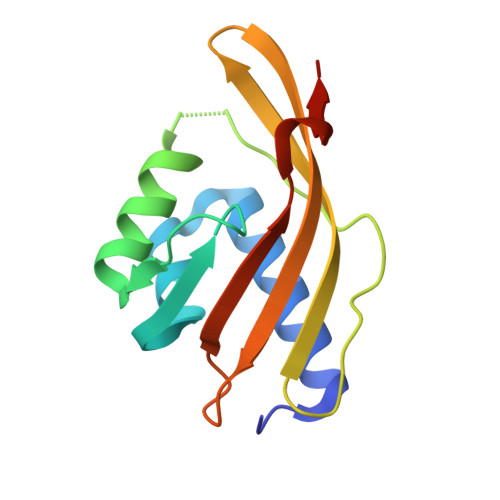Small Exterior Hydrophobic Cluster Contributes to Conformational Stability and Steroid Binding in Ketosteroid Isomerase from Pseudomonas Putida Biotype B
Yun, Y.S., Nam, G.H., Kim, Y.-G., Oh, B.-H., Choi, K.Y.(2005) FEBS J 272: 1999
- PubMed: 15819891
- DOI: https://doi.org/10.1111/j.1742-4658.2005.04627.x
- Primary Citation of Related Structures:
1W6Y - PubMed Abstract:
A structural motif called the small exterior hydrophobic cluster (SEHC) has been proposed to explain the stabilizing effect mediated by solvent-exposed hydrophobic residues; however, little is known about its biological roles. Unusually, in Delta(5)-3-ketosteroid isomerase from Pseudomonas putida biotype B (KSI-PI) Trp92 is exposed to solvent on the protein surface, forming a SEHC with the side-chains of Leu125 and Val127. In order to identify the role of the SEHC in KSI-PI, mutants of those amino acids associated with the SEHC were prepared. The W92A, L125A/V127A, and W92A/L125A/V127A mutations largely decreased the conformational stability, while the L125F/V127F mutation slightly increased the stability, indicating that hydrophobic packing by the SEHC is important in maintaining stability. The crystal structure of W92A revealed that the decreased stability caused by the removal of the bulky side-chain of Trp92 could be attributed to the destabilization of the surface hydrophobic layer consisting of a solvent-exposed beta-sheet. Consistent with the structural data, the binding affinities for three different steroids showed that the surface hydrophobic layer stabilized by SEHC is required for KSI-PI to efficiently recognize hydrophobic steroids. Unfolding kinetics based on analysis of the Phi(U) value also indicated that the SEHC in the native state was resistant to the unfolding process, despite its solvent-exposed site. Taken together, our results demonstrate that the SEHC plays a key role in the structural integrity that is needed for KSI-PI to stabilize the hydrophobic surface conformation and thereby contributes both to the overall conformational stability and to the binding of hydrophobic steroids in water solution.
- Division of Molecular and Life Sciences, Pohang University of Science and Technology, South Korea.
Organizational Affiliation:


















